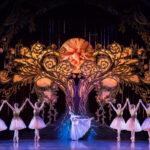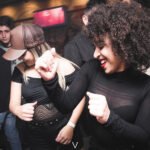The Chinese Lion Dance, a captivating performance steeped in tradition, is a cornerstone of celebrations across the globe, most notably during the Spring Festival, or Chinese New Year. This energetic dance, far from mere entertainment, is a potent symbol of good fortune and prosperity, believed to ward off malevolent spirits and usher in an era of luck and happiness. As an emblem of Chinese culture, the lion dance transcends generations, captivating audiences with its vibrant costumes, rhythmic music, and dynamic movements.
Unraveling the Symbolism of the Lion Dance
In the heart of Chinese culture, the lion reigns supreme as a symbol of power, wisdom, and superiority. This revered status translates directly into the lion dance, where each performance is imbued with the hope of bestowing these qualities upon those who witness it. Whether at bustling Chinese festivals or significant personal milestones, the lion dance is invoked to attract good fortune and dispel negativity, creating an atmosphere of auspiciousness and joy.
The lion dance holds a particularly prominent place in Chinese New Year festivities. As the lunar new year dawns, communities around the world resonate with the sounds of drums and cymbals accompanying the lion’s energetic movements. This tradition is deeply rooted in the desire to usher in prosperity and good luck for the year ahead. Beyond its symbolic significance, the lion dance serves as a vibrant expression of cultural identity, fostering a festive spirit and uniting communities in shared celebration.
Alt: Vibrant Chinese lion dance performance with two performers in a colorful costume.
Deciphering the Lion Dance Costume: Artistry in Motion
The magic of the Chinese lion dance comes to life through its elaborate costumes, brought to life by a team of two skilled performers. This partnership echoes the dynamic of a pantomime horse, where seamless coordination creates the illusion of a single, magnificent creature. One dancer embodies the lion’s head and forelimbs, their movements dictating the expressive front of the lion, while the other controls the back and hind legs, providing the powerful driving force. The illusion is further enhanced by costumes that extend to seamlessly blend with the performers’ legs, sometimes even incorporating paw-shaped shoes, fully immersing them within the lion’s persona.
The lion head itself is a masterpiece of craftsmanship, often larger-than-life and bearing a striking resemblance to the mythical dragons and the iconic stone lions that guard sacred spaces throughout China. These heads are not merely masks; they are intricate works of art, adorned with vibrant colors, shimmering scales, and expressive features that capture the lion’s powerful spirit.
The performance is inseparable from the accompanying music – a vibrant tapestry woven from the thunderous beats of drums, the crashing clashes of cymbals, and the resonating tones of gongs. This percussive symphony provides the rhythmic heartbeat to the lion’s movements, which range from mimicking a lion’s natural behaviors to showcasing impressive martial arts agility, depending on the distinct style of dance being performed.
Alt: Detailed view of vibrant and ornate Chinese lion dance costumes, showcasing the lion head and body.
Exploring the Diverse Styles of Chinese Lion Dance: Southern and Northern Traditions
While all Chinese lion dances share the foundational elements of costume, music, and symbolism, centuries of development have branched the art form into two primary styles: the Southern Lion Dance and the Northern Lion Dance. These distinct styles, each with its own regional influences and performance characteristics, showcase the rich diversity within this tradition.
The Animated Southern Lion Dance: Expression and Entertainment
Originating in Guangdong province, the Southern Lion Dance is the prevalent style in Hong Kong, Macau, and across Southeast Asia, reflecting the diaspora of southern Chinese communities. This style is characterized by its playful and expressive movements, deeply rooted in the meticulous observation of actual lion behavior. Performers emphasize actions such as scratching, body shaking, and fur licking, imbuing the lion with a lifelike and engaging personality.
Southern lion dance performances are renowned for their vividness, entertainment value, and even comedic elements. Beyond the realistic portrayals, Southern Lion Dance often incorporates skillful feats, such as manipulating and “swallowing” a ball, showcasing the dexterity and coordination of the performers. For an unparalleled immersion into the Southern Chinese lion dance tradition, the Hong Kong Chinese New Year Performance Night offers a spectacular showcase.
Alt: Energetic Southern Lion Dance performance in Hong Kong, highlighting the expressive movements and vibrant costumes.
The Acrobatic Northern Lion Dance: Martial Arts and Majestic Movements
The Northern Lion Dance, in contrast, boasts a strong connection to kungfu, the umbrella term for Chinese martial arts. This influence is evident in its more acrobatic and dynamic movements. Interestingly, the Northern style features variations with both single and dual performers. A young lion is typically portrayed by a single dancer, emphasizing agility and solo skill, while an adult lion comes to life through the collaboration of two performers. Costumes in the Northern style are designed for robust movement, prioritizing practicality and flexibility over elaborate ornamentation.
The adult Northern Lion Dance often features breathtaking acrobatic lifts, where the rear performer hoists the front performer, enabling the lion to stand upright in a display of power and majesty. Northern lion dances are celebrated for their gymnastic prowess, incorporating a repertoire of rolling, wrestling, leaping, jumping, climbing, and even kowtowing movements. To witness the Northern Chinese lion dance in its full glory, venues such as China’s martial arts theaters, including the renowned Red Theater in Beijing, or even the Shaolin Temple, offer exceptional viewing opportunities.
Alt: Dynamic Northern Lion Dance performance demonstrating acrobatic movements and martial arts influence.
Tracing the Origins and History of the Lion Dance: From Myth to Modernity
The origins of the Chinese lion dance are shrouded in intriguing debate, with various theories vying for prominence. However, the most widely accepted narrative points to a fascinating evolution rooted in cultural exchange and adaptation.
In traditional Chinese culture, the lion, much like the revered Chinese dragon, was initially perceived as a mythical creature, absent from the native fauna of China. Prior to the Han Dynasty (202 BC–220 AD), lions were rare and exotic, primarily encountered in the Central Plains through the westward routes of the Silk Road trade, originating from regions encompassing modern-day Xinjiang.
The arrival of these magnificent creatures sparked curiosity and fascination. People began to mimic the appearance and movements of these novel lions in performances. This nascent form of lion mimicry gradually evolved into the lion dance during the Three Kingdoms Period (220–280). Its popularity surged further with the rise of Buddhism during the Northern and Southern Dynasties (420–589), as the lion held symbolic significance in Buddhist iconography. By the Tang Dynasty (618–907), the lion dance had ascended to the realm of courtly entertainment, becoming a recognized form of performance within the imperial court.
Over centuries, the lion dance transitioned from courtly spectacle to a beloved folk tradition, embraced by the populace as a means to pray for good fortune during the Spring Festival and other celebratory occasions. The lion dance stands as a powerful testament to the dynamism of Chinese folk culture. With the waves of Chinese immigration across the globe, this vibrant tradition has transcended geographical boundaries. Overseas Chinese communities in Europe, the Americas, and beyond have established thriving lion dance clubs, ensuring that the rhythmic drums and captivating movements continue to resonate during Chinese festivals and significant events, particularly Chinese New Year, keeping this cultural heritage alive for generations to come.
Alt: Historical depiction of a Chinese lion dance performance, illustrating its long-standing tradition.


